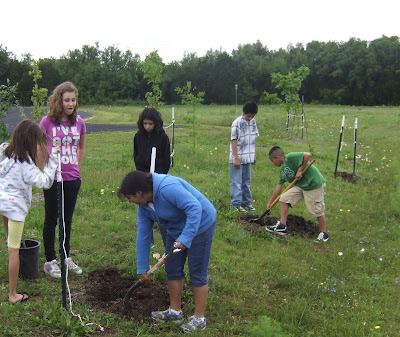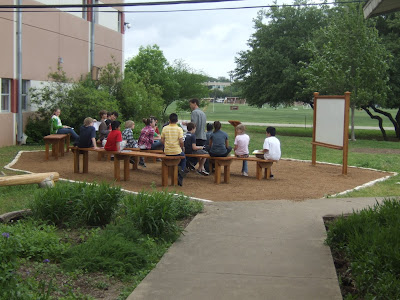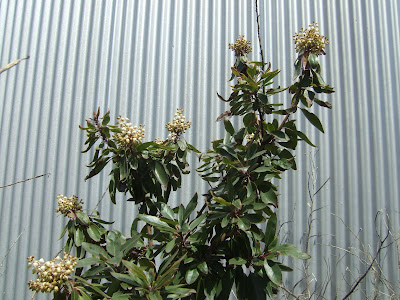Like many large scale projects, this one had its share of obstacles. Ryan remained undaunted.
After meeting with Ryan and his Dad, Randy, we came up with a plan that fit the space, had seating for 32 plus room for a couple of wheelchairs, and, hey, how about a lectern, and, say, wouldn't a large dry erase board be nice?
Dealing with the grass was the first main obstacle. Round Up? Nope, not compliant with our organic philosophy. Concentrated vinegar/salt mixture- turned out to be too complicated, and the Bermuda grass just laughed at household strength vinegar.
The troop manually removed the defeated weeds, rocks, and chunks of clay heavy soil. Then they covered the ground with landscape cloth after installing the tiered benches. They also spent the better part of two weekends filling in the site with crushed granite.
Ryan's design is well thought out. Being on the tall side himself, the back row is comfortable even for the tallest students. It increases visibility for the instructor and students reading from the whiteboard.
Visible in the background is additional Troop 505 Eagle project. Brian Bales, another CSMS alumnus, built a sturdy and heavily used tool shed two years ago. And, if you look closely at the first photo featured in this post, you can see one of the many bird boxes Garrett Dunaway installed around our campus last year.


Ryan surprised me with his idea to dedicate the classroom to two of his former science teachers at Small. Dale Branam passed away five years ago. Susan Fillman, who he had in 6th grade died this past September.


An interesting tidbit about Ryan: he was the first student at Small to win our campus level National Geographic Geo Bee twice.







































